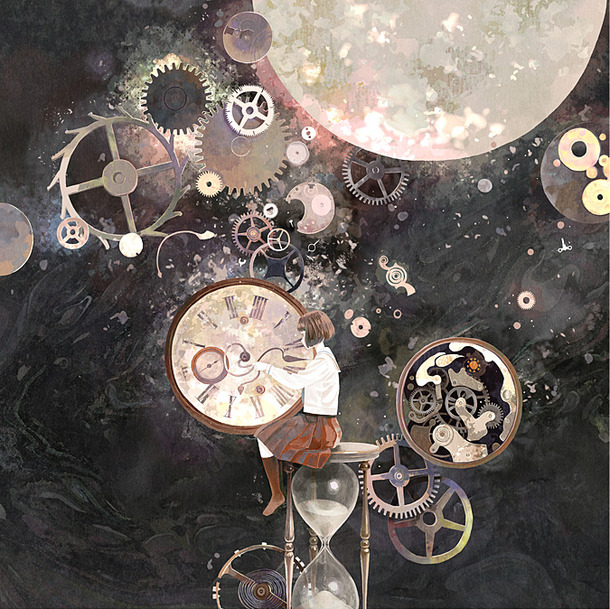What spurs breakthroughs? Technological and scientific breakthroughs occur when one or more of the following 5 things occur:
1. New measurement techniques, tools & regimes: When new regimes of measurement and exploration are possible, people begin to see, understand, control, and design things differently. Invention of the scanning tunneling microscope (STM) and its successor the atomic force microscope spurred the birth of nanotechnology. The STM provided unprecedented visualization and manipulation of individual atoms – earning its inventors, Gerd Binnig and Heinrich Rohrer at IBM, the 1986 Nobel Prize. Now, nanotechnology is almost as omnipresent as items ranging from Playstations to high-end carbon fiber bikes.
2. When fields collide: Interdisciplinary cross pollination, the rigorous application of known models from one field into another often results in breakthroughs. The whole (relatively) new and thriving field of Biophysics is a classic example. The ability to tag and track molecules (using techniques like fluorescence and nuclear magnetic resonance NMR) help us understand interactions between the various systems of a cell, including the interactions between DNA, RNA, and protein biosynthesis. Understanding how a protein folds – the process by which a protein comes into the structural shape essential to its function – is another cornerstone and holy grail of BioPhysics. Being able to control protein folding has brilliant implications from preventing Alzheimers to a customized cure for cancer.
3. Investigation of apparent paradoxes: True scientists and logicians rebel at the notion of paradoxes because there is no such thing as a paradox – only the emergence of apparent contradictions from underlying errors in thoughts or premises. Thus, a serious and thorough investigation of an apparent paradox can turn fields upside down or create brand new ones. Case in point: Perhaps the most important and influential paradox of the 20th century, the EPR paradox. In 1935, the namesakes, Einstein, Podolsky, and Rosen designed a thought experiment to reveal the shortcomings of quantum mechanics. The painstaking and brain-dicing investigation of the apparent ‘spooky action at a distance’ in the past century, has revealed a beautiful branch of physics, Quantum Mechanics. From explaining the very fundamentals of the universe, such as, the behavior of electronics to creating strange exotic states of matter like Bose-Einstein condensates, to flipping information technology on its head via quantum computing and quantum physics is arguably the most important scientific breakthrough of the past century.
4. New or more precise definitions: What exactly is the mind? For that matter, what is consciousness, life, and intelligence? It was the quest to precisely answer these questions that led 20th century logicians, computer scientists, and philosophers – from Herbert Simon to Turing – to the field of artificial intelligence (AI). AI now dominates machine learning (e.g., Netflix), natural language processing (think Google translate), and robotics.
5. Exploration of unintuitive & unobvious results: Sometimes masked as ‘accidental’ discoveries, several breakthroughs come about because of the methodical investigation of surprising and unexpected results. From the discovery of radioactivity and X-rays to simple but highly practical post-its, the exploration of unobvious results can have surprising and lasting implications.
In fact, we can go a step further and say that unintuitive results define the very maturity of a field. ‘Fields’ of study come of age when there are unobvious and unintuitive open questions. The progress at this stage is tremendous, fast paced, and exciting, with a few people bush-whacking unexplored territories. For Quantum Mechanics, this happened in the 1920s. And fields reach maturity when there are standard answers to unintuitive questions. This is an indication that much of the low-hanging fruit is taken. Experiments become harder and require more expensive or hand-built equipment to keep foraying ahead. Neuroscience is slowly reaching this stage now.
Aside – Rotary Gallop: Our finance startup Rotary Gallop fits into each one of these categories, making it a super breakthrough technology. We have a novel way of measuring control amongst shareholders. It’s a collision of social choice theory – which itself is a collision of sociology with mathematics – with finance. We can now explain several apparent paradoxes, e.g., how dilution in some cases leads to more control. And lastly, we use unobvious results to redefine control bands needed to explain the degree of control in corporations. Now, the correlation of success in a startup to the degree of its underlying breakthroughs is a topic to explore another day. For now, I just hope it’s not a negative correlation.
Acknowledgments & Disses: This blog post was inspired by and a result of a lively discussion with Guy Tal, Rotary Gallop’s CTO. It also builds on my early and frustrated critique of Peter Drucker’s discussion on what causes innovation — best summarized by ‘blah’. Guy’s independently analyzed list overlapped with mine on spurs 1, 3, and 5. Guy came up with spur 2 and spur 4, which I shamelessly stole. All the listed examples are mine.
